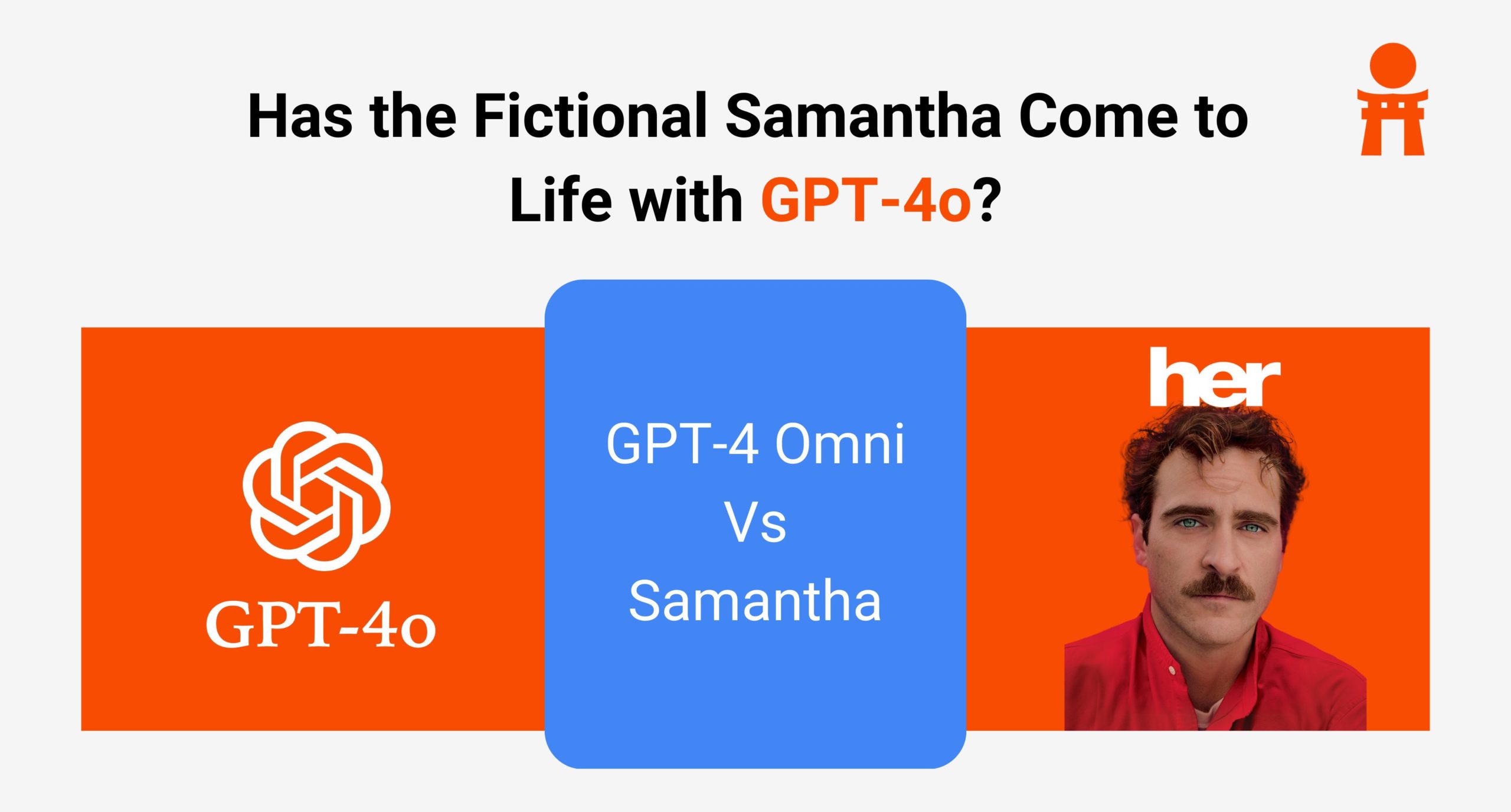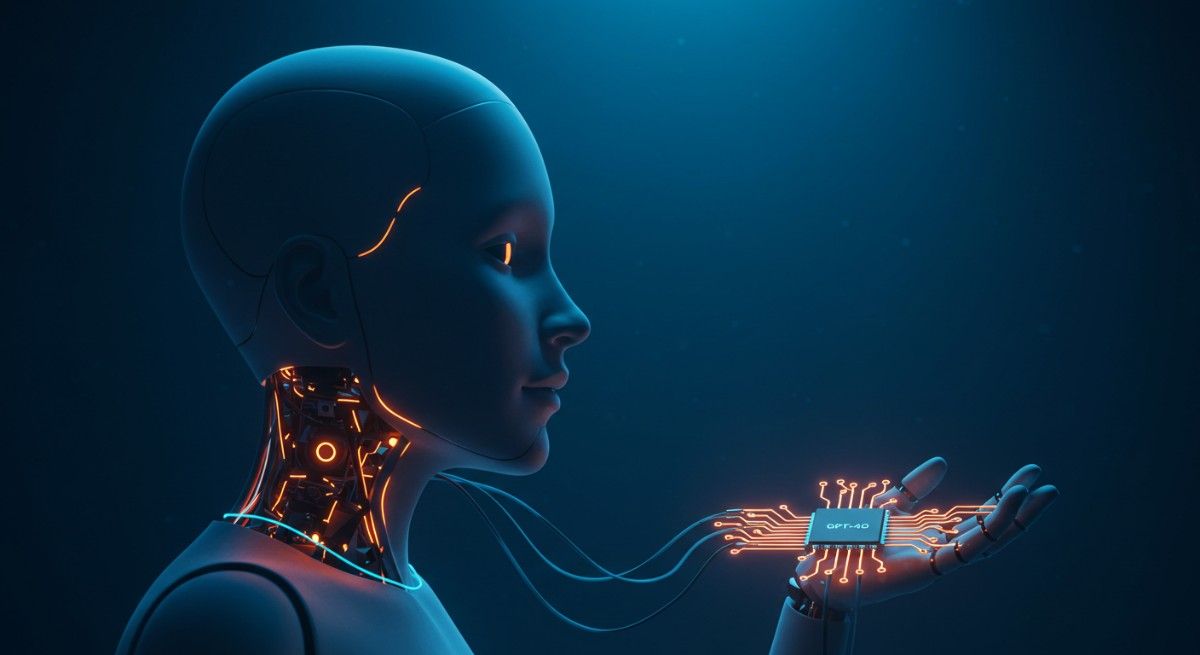This article aims to establish a connection between OpenAI‘s new model, GPT-4o, and Samantha from the film, Her.

The movie Her was an icon of its time.
From dialogues to characters, everything in the movie spoke quite profoundly about existentialism, life, and technology.
But what struck out, and left the world thinking was indeed Samantha—the AI bot that can be imagined as a human without a body. A partner that experienced the world with you, except it was not physically present. But more than anything, Samantha had the traits and guts to occupy one’s mind and heart, completely.
While the movie was great, we couldn’t really relate to it. I mean, you can expect a bot to tell you about the weather conditions, but not expect it to end your loneliness by offering a company that can be based on you want it to be.
Another interesting read: GPT-3.5 vs GPT-4
But, not anymore!
Just like Samantha entered Theodore’s life, it seems like OpenAI’s GPT-4o model is developed to do exactly the same with us, i.e. become the utmost important person in our lives.
And as this dystopian construct nears to become the present, it’s time to take a step back and think. What is it going to do for the world? Where are we headed?
What is GPT-4 Omni and How Is It Different From Other OpenAI LLMs
All of us have been familiar with OpenAI’s LLMs. But the most recent one i.e. GPT-4 omni is different from the rest.
Why?
When one uses previous models of OpenAI, let’s say GPT -4 in a voice mode, a pipeline of three separate models was used: one to transcribe audio to text, the main GPT model to process the text, and another to convert the responses back to audio.
This process meant that the core intelligence, provided by models like GPT-4, lost a lot of contextual information—it couldn’t directly perceive tone, distinguish multiple speakers, or identify background noises, nor could it express laughter, sing, or convey other emotional nuances.
GPT-4 omni on the other hand has been trained end-to-end across multiple modalities including text, vision, and audio.
This integration means that all inputs and outputs are processed by the same neural network, significantly enhancing the model’s ability to understand and generate more human-like interactions across different forms of communication.
GPT-4o Vs. Samantha in Action
Let’s start with a clip of GPT-4o in action.
Well, it’s not only Samantha’s vocals that are the same here, there are quite a lot of parallels between the two.
AI’s Ability to Foster Emotional Relationships
The parallels between Samantha and GPT-4o begin with their core functionalities but extend into their very essence—the ability to form a genuine, emotional connection with users.
In Her, Samantha’s interactions are characterized by an intuitive understanding of Theodore’s feelings and needs, transcending the mechanical to become deeply personal.
Also learn how GPT-4 is stepping towards AGI
She listens, responds, and evolves based on the interactions she has, much like a human would.
Similarly, GPT-4 Omni brings a level of interaction that feels startlingly personal. Unlike its predecessors, which could perform tasks but without understanding the emotional weight behind requests, GPT-4o can detect subtleties in tone, context, and even the unspoken emotional states that influence human communication.
For instance, if a user’s voice reveals stress while asking about relaxing music, GPT-4o doesn’t just play any music—it selects tunes specifically tailored to soothe. These nuances make the interaction feel less like querying a machine and more like talking to someone who understands you.

The Ability to Learn and Adapt
Samantha’s ability to learn and adapt based on her interactions with Theodore and her environment is mirrored in how GPT-4o utilizes its advanced algorithms.
GPT-4 Omni learns continuously from each interaction, refining its responses not just to better answer queries but to connect on an emotional level, predicting needs and even offering support before it’s explicitly asked for.
One striking scene in Her is when Samantha composes a piece of music to encapsulate a moment she and Theodore share on a beach—she translates a complex human experience into a melody, capturing the essence of the moment
Learn how Mistral AI’s large model challenges GPT-4’s dominance
GPT-4o, while not composing music, uses similar capabilities to generate creative content, like writing a poem or drafting a heartfelt letter, thereby enriching interactions with creativity that feel both profound and personal.
In essence, both Samantha and GPT-4o challenge our preconceived notions of artificial intelligence. They aren’t just tools; they’re gateways to a new form of relationship built on understanding, responsiveness, and emotional depth.
How will AI Like GPT-4 Omni Impact the Society?
The Paradox of Emotional Connection
The allure of AI like GPT-4o lies in its ability to offer consistent, understanding, and tailored interactions. This could potentially fill voids in human connectivity, providing companionship in increasingly isolated lives.
Yet, this raises critical questions about the fabric of our social interactions. If we pivot towards finding emotional solace in AI, what happens to our human connections?
It also poses a risk to our community life. As people might find it easier to turn to AI for support, the traditional community bonds that have been a cornerstone of human society could weaken.
If our main emotional interactions are with AI, what happens to our real-world communities? Will the convenience of AI companions lead us to neglect human relationships and communal activities?
The Increasing Influence and Power of AI to Shape the Society
The power to influence held by the companies creating these AIs is immense. As AI becomes a regular part of our lives, it can do more than make tasks easier; it could influence our feelings and the ways we interact with the world.
These companies could use AI to guide public opinions or emotional states, impacting everything from politics to personal independence. With AI like GPT-4o, the line between helping and controlling could become blurry, leading to serious questions about privacy and the freedom to make our own decisions.
Balance in a New Era
As we step into this new phase of technology, where devices like GPT-4 Omni can deeply influence both personal lives and society, we face important choices. We must think carefully about the role of AI in our lives and consider how to use it responsibly. Balancing technological advancement with ethical standards, personal fulfillment with community health, and corporate interests with consumer rights is crucial.
We’re moving toward a future where AI could redefine our social interactions and societal structures. The path we choose now—how we integrate AI into our lives and regulate its influence—will shape not just our personal experiences but also the kind of society we live in.
The once-fictional stories from movies like Her are becoming our reality, and it’s up to us to ensure that this technology enhances our lives without diminishing our human spirit.





